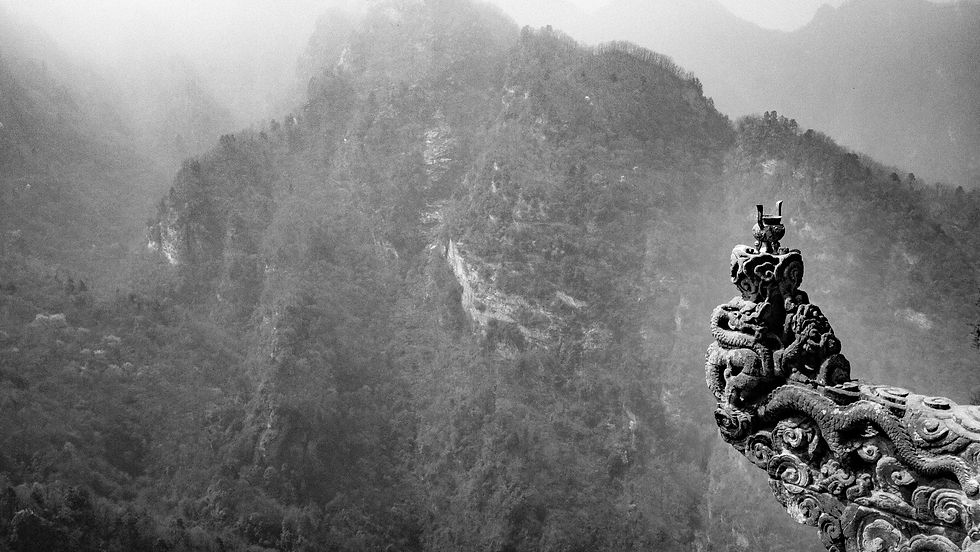Gotokuji Temple: Birthplace of Maneki-neko 大谿山 豪徳寺
- Robin Yong

- Jan 12, 2024
- 3 min read
Updated: Jan 14, 2024

Daikeizan Gōtoku-ji (大谿山 豪徳寺) is a Buddhist temple located in the Gōtokuji district of Setagaya ward, Tokyo, Japan.
It is known as the "cat temple" because of the maneki-neko.
The maneki-neko (招き猫, lit. 'beckoning cat') is a common Japanese figurine which is often believed to bring good luck to the owner. In modern times, they are usually made of ceramic or plastic. The figurine depicts a cat, traditionally a calico Japanese Bobtail, with a paw raised in a beckoning gesture. The figurines are often displayed in shops, restaurants, pachinko parlors, dry cleaners, laundromats, bars, casinos, hotels, nightclubs, and other businesses, generally near the entrance, as well as households. Some maneki-neko are equipped with a mechanical paw which slowly moves back and forth.
Maneki-neko come in different colors and styles and vary in degrees of detail. Common colors are white, black, red, and gold. In addition to statues, maneki-neko can be found in the form of keychains, piggy banks, air fresheners, pots, and numerous other media. Maneki-neko are sometimes referred to simply as "lucky cats" or "calling cats".
Originally, maneki-neko were white, but over the years with the combination of Feng Shui, different color variations were born. The original white color is to get good luck and overall good fortune, while black is to ward off evil, red is for good health, yellow or gold is for wealth, and pink is for romance.
There most famous folklore in Japan about the origin of maneki-neko involves Ii Naotaka during the Kan'ei era (1622-1624) of the Edo period. On their way back from the falconry, Naotaka's party stopped at Gōtoku-ji Temple to rest after being beckoned by a cat at the temple gate. A violent thunderstorm soon followed, and they marvelled at the cat's good fortune and thanked the temple priest for his hospitality. As a result, Gōtoku-ji became the family temple of the Ii clan, and the temple prospered under their patronage. Financially backed up by Naotaka, Gotokuji temple was rebuilt in 1633.
Later, Gotokuji temple built the Shofuku-den to enshrine the cat that brought good fortune, naming it as "Manekineko". Ever since, many people visit Shofuku-den continuously to pray for well-being for the family, prosperous business, luck and happiness.
At Gōtoku-ji, the upraised right hand of Manekineko of Gotokuji holds no coin while Manekineko does in general. Actually, Manekineko does not bring you happiness directly. Manekineko brings you chances to link to some people, and it is up to you whether you can make it work. If you live in constant gratitude, luck and happiness come to you spontaneously. Manekineko of Gotokuji holds no coin to teach this lesson.
Superstitions about the maneki-neko include it being able to "beckon...customers into shops" and "bring good fortune and prosperity into households. The priests at the temple tell me that people often purchase a cat statue from the temple to bring home and write their wishes on it. When the wishes have been fulfilled, they are supposed to bring the cat statue back to the temple and place it on one of the many racks next to the Kwannon statue in the temple. And one has to bring the cat statue back personally, mailing it back to the temple is not acceptable. The Manekineko cat statue comes in 8 different sizes and costs from 500 to 7000 yen. They have a big sign outside the temple to say that one person is only allowed to buy one.

This year, I came here specially to buy a cat statue from this original source because Fengshui wise, 2024 is financially bad for many people, and the wealth star lies with the cat/ tiger, (so people born in the years, months, days or hour of the Tiger will have a slight advantage in this wealth aspect, or alternatively having a real cat or cat statue at home or work may help.) Cat satues wise, I think nothing beats the original from the original temple source. So, hopefully, things will be ok for me.
Gotokuji Temple is located in the Bunkyō special ward of Tokyo, not too close to the main city attractions, but it is actually not far away from Shinjuku by train. Gotokuji Temple’s opening hours are usually from 6 am to 6 pm, Sunday to Saturday, but during winter, they are open 8am to 430pm . There is no entrance fee for this temple. However, it is not uncommon that the cats are frequently sold out and even when available, one person is only allowed to buy one....








Comments